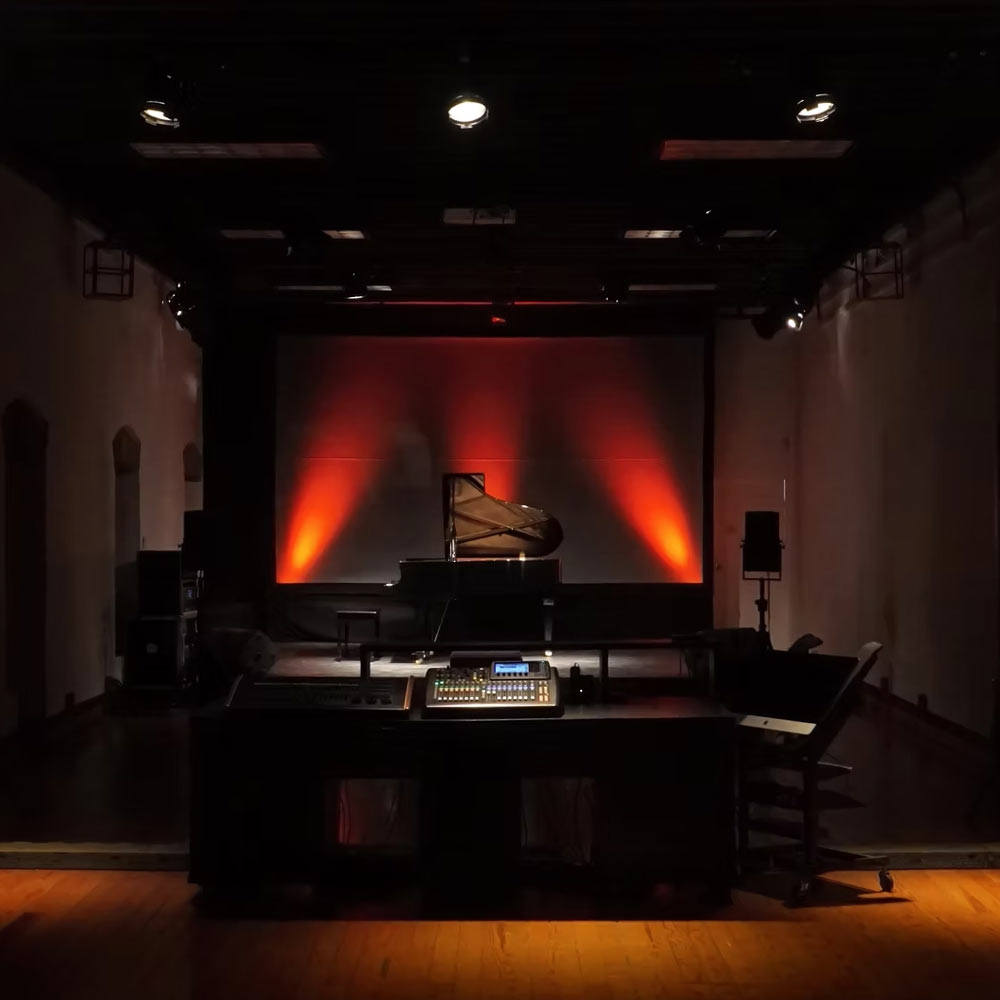This concert explores a series of past and recent technology-based sound works of artists related to the Mexican Centre for Music and Sonic Arts in Morelia, Mexico. The aim is to share some of the acousmatic perspectives of the multiple composers that work and create at the Centre.
Rodrigo Sigal (MX)
Friction of things in other places
When things occur simultaneously, there will always be different levels of friction. Energy, disagreement, pitch, physical action and others are areas where difference can generate musical material. Friction of things in other places (2008 / 8 min) explores different levels to structure sound ideas through differences in material and sound sources. Created at the composer’s studio in London.
Carole Chargeron (FR)
La Selva ya no suena
Based on an article I read several years ago about endangered jungle sounds, La Selva ya no suena (2022 / 8:31 min) is a fictional soundscape made up of samples recorded in the Costa Rican jungle that, thankfully, still sounds!
This piece was composed thanks to the Sistema de Apoyos a la Creación y Proyectos Culturales (Sistema Nacional de Creadores de Artes, Mexico).
Tobías Alvarez (MX)
Paralelismos
This electroacoustic composition takes inspiration from the parallels (Paralelismos in Spanish) that occur between the transformation of sound and semantic perception: between the so-called reduced listening (which concerns the forms of sound itself) and causal listening (which may be perceived through image and language). Most of the materials and resources that make up the work are recorded instruments (percussions, clarinet, trumpet, piano, etc.), objects (dice, cards, games, marbles, scissors, etc.) and field recordings (e.g. nature phenomena and mechanical sounds, sounds relating to transportation, among others). Paralelismos (2024 / 9:11 min) also incorporates digitally synthesized and transformed sounds from modular synthesis, as well as audio processing from pre-recorded musical instruments and other sources. The extra-musical elements that inspire this work touch upon the act of playing and its metaphor within a larger social context that relates to transportation and communication in contemporary life. The management of natural and technological resources is also referenced, particularly their relationship viewed from the Yucatan peninsula in southeast Mexico, where vast cenotes (groundwater sinkholes) and natural caves interact with flying insects and imaginary soundscapes. In this sense, the work oscillates between the deductive and the inductive, between the general and the local, thus provoking a reflection on the forms, trajectories, and starting points between sound, music, and reality. In this case, a Latin-American reality.
Rodrigo Sigal (MX)
Brain inPulse
Here we find looping structures to generate a pulse that cannot be grasped until the patterns are evident. This evidence is subtle and useful for connecting levels of information. The piece titled Brain inPulse (2012 / 5:10 min) aims to work pulse within defined spectral areas and by repetitions where elements are superimposed and therefore musical functions can be shared.
Tania Rubio (MX)
The Guardians
The work is based on fieldwork conducted in the Amazon Rainforest in 2025 with the Acoustic Ecology Lab in Mexico (LEAM).
Deep in the jungle, among humid roots, dwells a silent army, The Guardians (2025 / 10 min). Insects transform death into fertilizer, regulate natural chaos, and are part of a food chain that regenerates life. Insects are messengers of the state of health of the planet. Their presence is the announcement of life; their silence is the message that death is near. Insects are the guardians. Invisible guardians, millenary guardians, who sustain life on earth.
Francisco Colasanto (AR)
Mambo
Mambo (2024 / 3 min) is a tribute to Javier Álvarez, who passed away in 2023. Drawing inspiration from the sounds of his iconic work Mambo a la Braque, Francisco Colasanto sought to reimagine it, weaving in echoes of dance and celebration. Javier was a person who lived with joy and a passion for festivity, and it is with that vibrant spirit that I wish to remember him.
Sofía Matuz (MX)
Aquarius
Aquario (2020 / 4:20 min) is an acousmatic work that traces an imaginary soundscape by intertwining biological rhythms and binaural pulses. The piece explores the sounds of a body in gestation, shaping an aural ecosystem that moves between embodied sonic details and broader spatial textures.
Tonalli Nakamura (MX)
Encefal
This work titled Encefal (2020 / 7:39 min) is based on the human encephalon, and part of a series of works based on the central nervous system. The encephalon is the part of the central nervous system in vertebrates that is enclosed within the skull (which serves to protect it). It is composed of three parts: the forebrain, midbrain, and hindbrain. Among other functions, it is responsible for receiving and interpreting countless signals coming from both the body and the external environment. In a typical human, the cerebral cortex is estimated to contain 16 billion neurons, while the entire encephalon contains 86 billion. These neurons communicate with each other through long fibers of protoplasm called axons, which carry trains of electrical impulses known as action potentials to distant parts of the brain or other areas of the body.

Mexican Centre for Music and Sonic Arts—Recent Works Created at CMMAS / Mexican Centre for Music and Sonic Arts - Photo: CMMAS
Concert
Mexican Centre for Music and Sonic Arts—Recent Works Created at CMMAS
Concert curated by Rodrigo Sigal (MX)
Mexican Centre for Music and Sonic Arts (MX)
Anton Bruckner University, Sonic Lab
Sa. 6. Sep. 2025
18:00
–
19:00
Ticket //
FREE / No Ticket